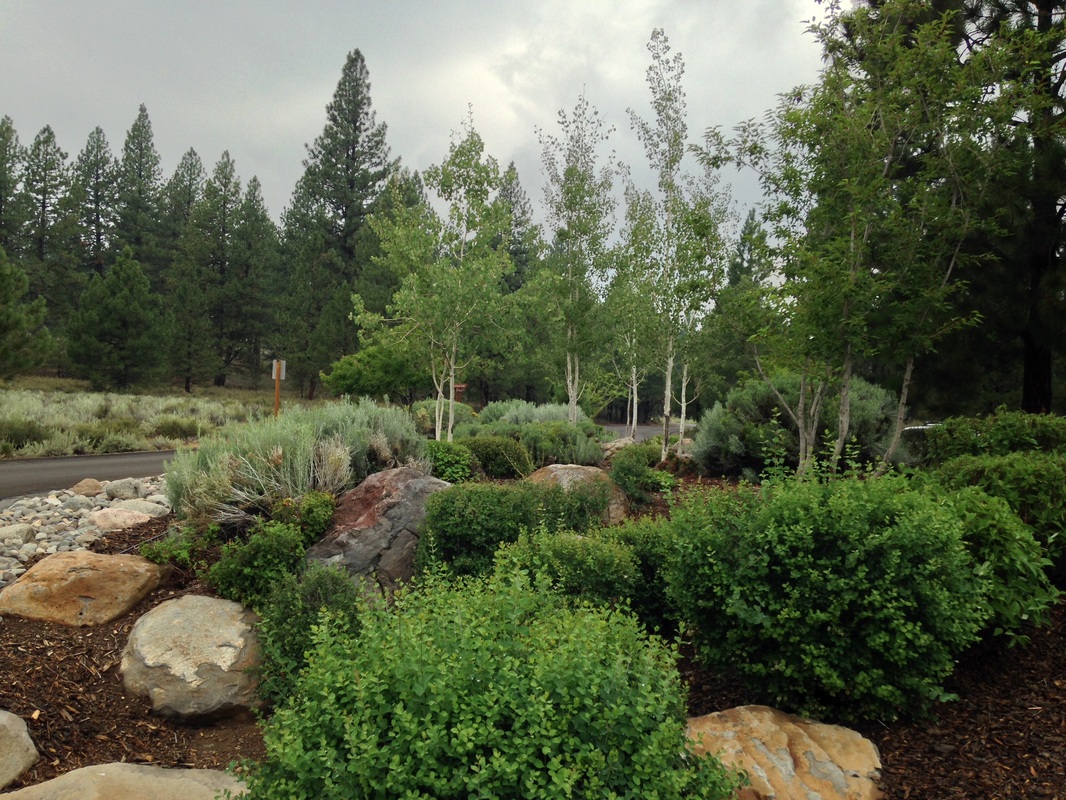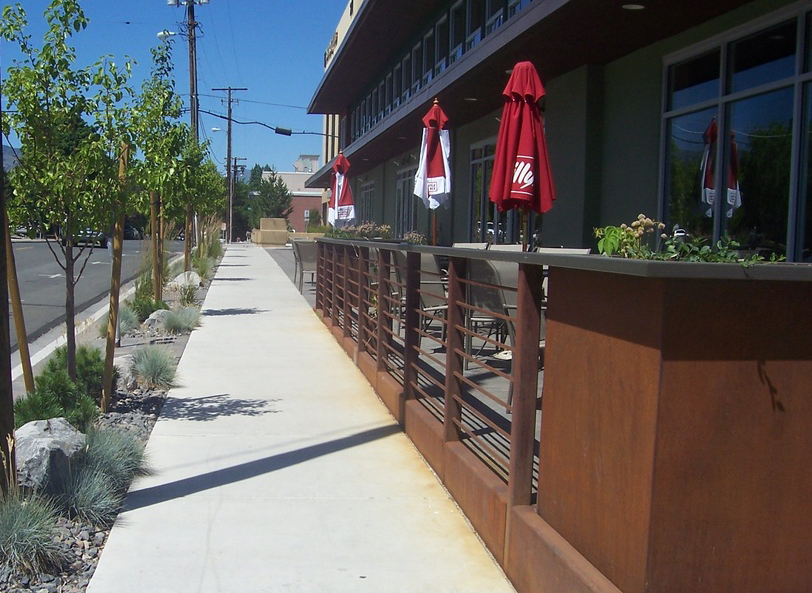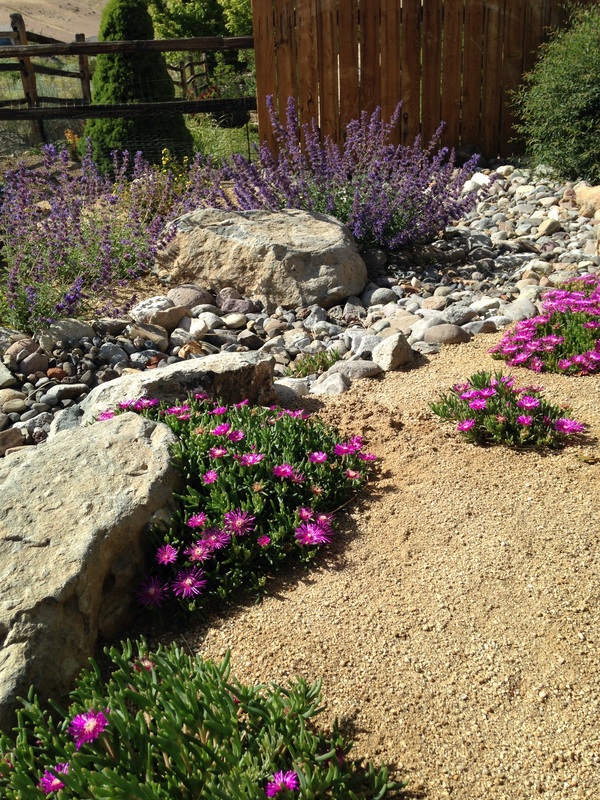Choose well, plant once.
Even if you love yard work, no one enjoys redoing work they’ve already done (and if you like repetitive work, we’ve got a garden that needs weeding). So, when designing (or redesigning) your yard, it’s a darn good idea to do a little homework first and avoid redoing your yard season after season when plants die.
Gardeners in Northern Nevada face a three-pronged challenge: climate, soil and water. The high desert of Northern Nevada can have temperature extremes, low humidity, clay-heavy soils and lots of wind that all inhibit plant growth. Don’t get poked by a prong. In other words, choose plants that can tolerate our soil and climate conditions and you’ll be much happier with the results.
Local shops know what works
With plants, it pays to shop local. The expression ‘drought-tolerant’ is used to describe plants that do well with less water. It doesn’t have to be an official drought year to take advantage of using these less-thirsty plants. Another expression you may hear is desert-wise. Choosing desert-wise plants will save you both time and money in the long run, even if it means buying from small, local garden shops instead of big box stores.
Large box stores typically buy plants nationally and truck them in from remote greenhouses. These greenhouses may not reflect your local climate and therefore the plants may not be well suited for your yard (ie it will not look like the picture on that little plastic spike). Or a plant that may be a perennial (a plant that lasts multiple seasons) in a mild California climate – and is labeled such by the greenhouse that grew it – acts as an annual (one season and done) in Northern Nevada. A knowledgeable local garden shop that grows their own or sources plants locally will be your best resource for all types of plants.
The case against grass
Even in the desert, grass has its place. It’s cooling on a hot day, provides pets and kids with a great, forgiving play surface and is a host to many fun recreational events, from picnics to football games. However, not every residential yard, business entrance and highway median should be carpeted in grass – and we’d argue most should not. Ask yourself, does your household “use” your lawn? If not, if it may be time to let it go. Here are four reasons to ditch the grass for a desert-friendly xeriscape:
1. Water is scarce in the desert. Watering non-life-sustaining plants (i.e. not those for food or shade) is perhaps not the best use of this resource.

2. Lawns take time, energy and money. Mowing, fertilizing, weeding, watering, dethatching and aerating takes more time and energy than maintaining desert-friendly plants.
3. Mowing can pollute and create waste. If your mower isn’t electric or a reel mower, that two-cycle engine creates noise and air pollution every time you mow.
4. Xeriscape can be spectacular. Are you a doubter? Just check out these images.
There’s a lot to choose from
Here is a nice big selection of trees, shrubs, perennials and grasses that have proven to grow well in northern Nevada.
TREES
| Deciduous | Evergreen | Fruit trees |
| Ash (Autumn Purple) | Arizona Cypress | Apple (most reliable) |
| Chokecherry | Austrian Pine | Pear |
| Crabapple Blue | Atlas Cedar | Asian pear |
| Gingko | Bosnian Pine | Plum |
| Golden Rain | Bristlecone Pine | Cherries |
| Hawthorne (Crusader) | Incense Cedar | Can grow well with spring frost protection |
| Kentucky Coffee | Limber Pine | Apricot |
| Lilac (Beijing Gold, China Snow, Ivory Silk) | Ponderosa Pine | Peach |
| London Plane | Scotch Pine | Nectarine |
| Maple (Amur, Autumn Blaze, Hedge, Hot Wings) | Swiss Stone Pine | |
| Oak (Bur, White) | Wichita Blue Juniper | |
| Persian Ironwood | White Fir | |
| Persian Ironwood | ||
| Redbud | ||
| Serviceberry | ||
| Zelkova |
The key to growing fruit successfully in Northern Nevada is choosing a variety with a high chill hour requirement – 700+ hours is ideal. Also consider an eastern, northeastern, or even northern exposure to extend dormancy into spring and delay spring buds that can be susceptible to frost.
GRASSES
| Alkali sacaton | Feather Reed |
| Blue Fescue | Little Bluestem |
| Blue Oat | Silver grass |
| Chinese Silver Grass | Switch |
| Feather Reed | Tufted Hair |
SHRUBS
| Amur Maple | Mugo Pine |
| Barberry | Ninebark |
| Buffaloberry | Potentilla |
| Butterfly Bush | Quince |
| Caryopteris | Rose of Sharon |
| Chokeberry | Rose (Rugosa,Woods) |
| Cistena Plum | Serviceberry |
| Cotoneaster | Siberian Peashrub |
| Diervilla (dwarf bush honeysuckle) | Smokebush |
| Juniper | Snowberry |
| Kinnikinnick | Spiraea |
| Lilac | Sumac |
| Mock Orange | Yucca |
PERENNIALS
| Agastache | Red Hot Poker |
| Lavender | LeadplantLiatris |
| Baptisia | Lupine |
| Chocolate Daisy | Mexican Primrose |
| California Fuchsia | Bee Balm |
| Centranthus | Catmint |
| Coreopsis | Penstemon |
| Daylily | Peony |
| Dianthus | Red Valerian |
| Coneflower | Russian Sage |
| Salvia | Fern Bush |
| Flax | Sedum |
| Blanket Flower | Snow in Summer |
| Sneezeweed | Spirea |
| Red Yucca | Thyme |
| Ice Plant | Veronica |
| Iris | Yarrow |
VINES
| Honeysuckle |
| Silver Lace |
| Trumpet Vine |
| Wisteria |
Ready, set, plant!
When the snow is off Peavine, it’s safe to plant (or so says the local lore), just do your homework first. In a companion blog, we look at plants that do well in the southern Nevada climate.
If you’re ready to build that amazing desert-friendly landscape, but you don’t yet have a home of your own, we can help. Our HIP-qualified lenders and real estate pros can get you started on finding a home that suits you and your backyard plans.
Photos courtesy of Artemesia Landscape Architecture
Sources:


